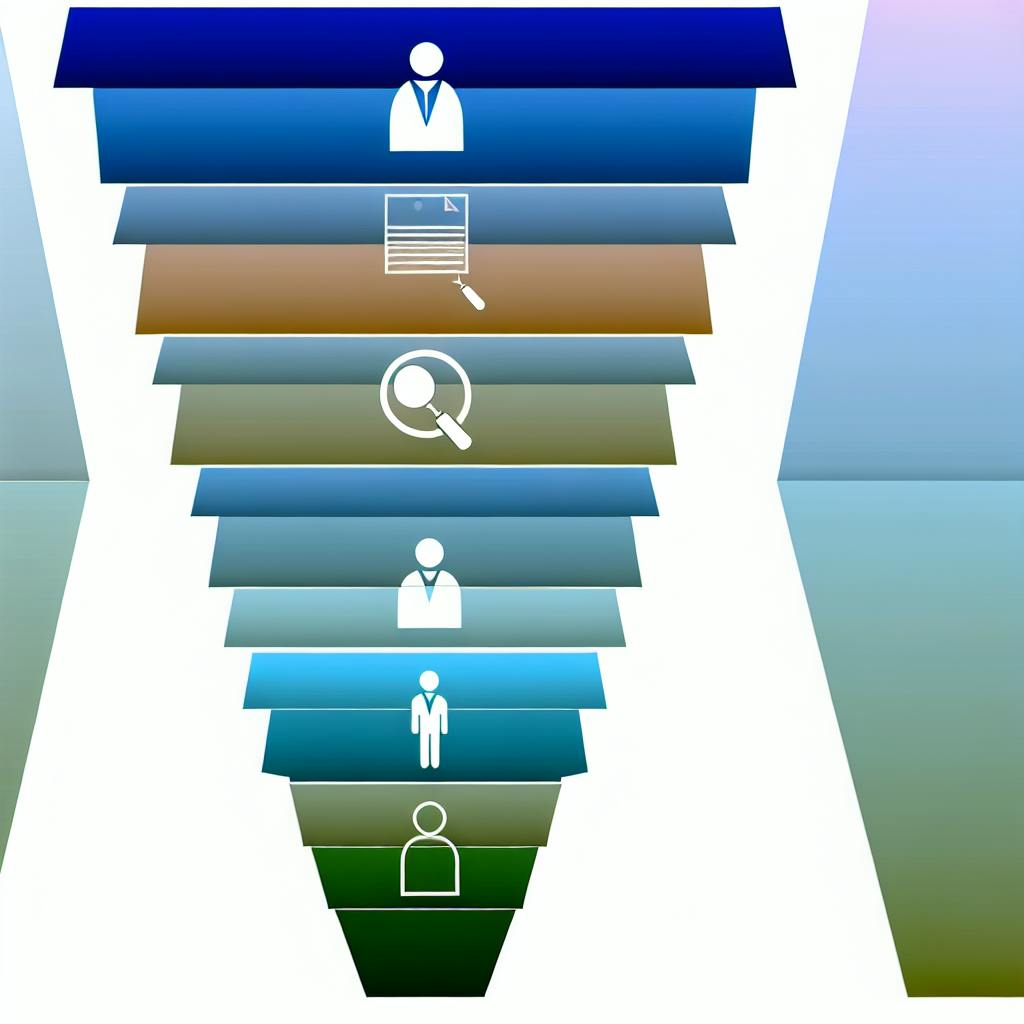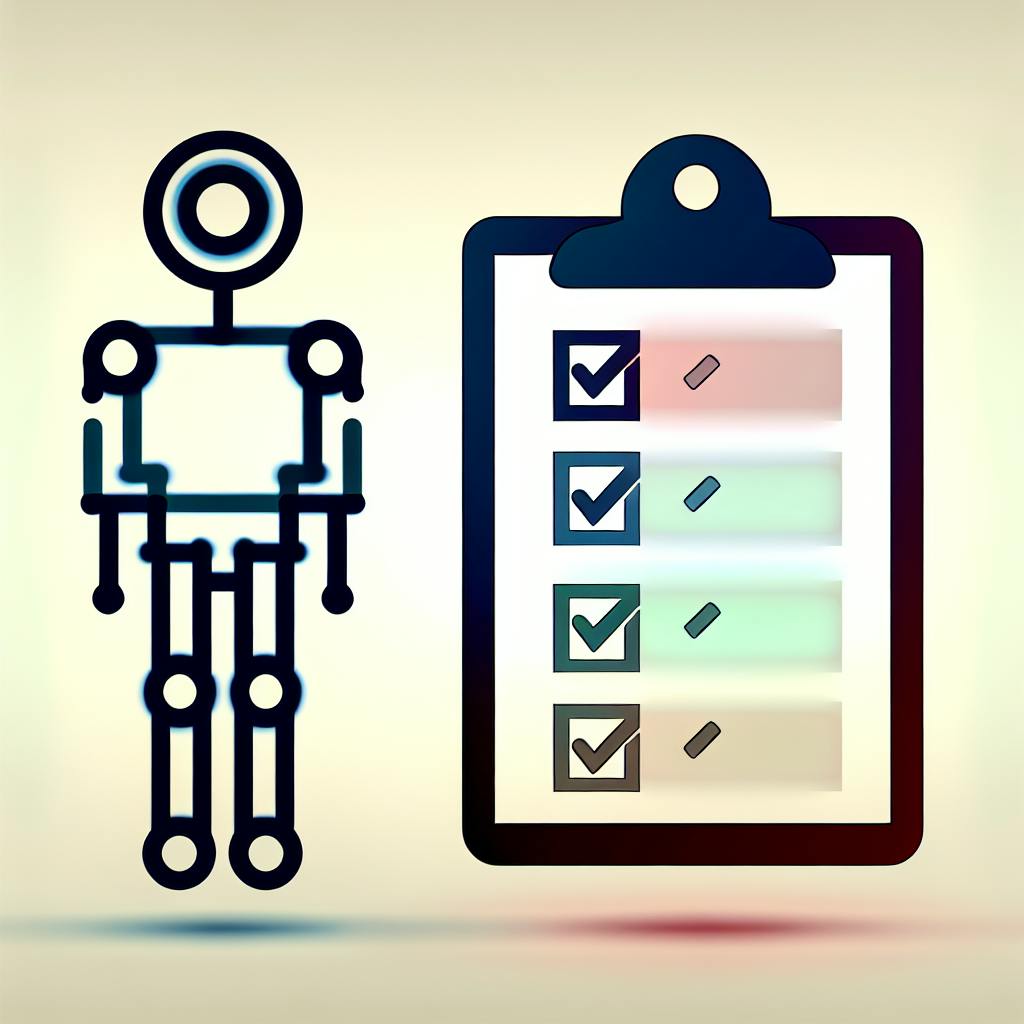A recruitment funnel is a visual guide for managing the hiring process, from attracting candidates to making a final decision. It helps companies:
- Improve candidate experience by identifying drop-off points
- Increase efficiency by focusing on qualified candidates
- Make data-driven decisions to enhance recruitment strategies
- Maintain a talent pipeline for current and future needs
The 6 stages of the recruitment funnel are:
- Awareness: Promote your company and generate interest among potential candidates.
- Attraction: Get a large pool of qualified applicants through job postings and employee referrals.
- Interest: Engage with promising candidates and address their questions.
- Application: Simplify the application process and review applications quickly.
- Selection: Conduct interviews, assessments, and evaluations to find the best candidates.
- Hire: Extend offers, negotiate terms, and prepare for onboarding.
| Key Metrics to Track |
Related video from YouTube
1. Awareness
Key Activities
- Promote your company through content marketing, social media, and job postings
- Connect with potential candidates on social platforms and at events
- Highlight company values and employee stories
- Improve your career website and job descriptions to attract the right candidates
Objectives
- Reach a wide audience of potential candidates
- Make your company appealing to job seekers
- Generate interest in working for your organization
Key Metrics
| Metric | Description |
|---|---|
| Website Traffic | Page views, time on site, etc. |
| Social Media Engagement | Reach, engagement, follower growth |
| Applicant Numbers | Number of applicants from different sources |
| Brand Awareness | Results from perception surveys |
Challenges
- Standing out in a crowded job market
- Promoting your brand on the right channels
- Creating content that appeals to your target audience
- Keeping consistent messaging across all platforms
2. Attraction
Key Activities
- Write clear job descriptions that explain the role and responsibilities
- Share job openings on career sites, job boards, and social media
- Use employee referrals to find qualified candidates
- Highlight the company’s values and work environment
Objectives
- Get a large number of qualified applicants
- Increase visibility to potential candidates
- Promote the company as a great place to work
- Encourage applications from ideal candidates
Key Metrics
| Metric | Description |
|---|---|
| Career Site Visitors | Number of visitors to the company’s career site |
| Job View-to-Apply Rate | Percentage of job viewers who apply |
| Application Sources | Channels driving the most qualified applicants |
| Employer Brand Perception | Surveys measuring brand reputation among candidates |
Challenges
- Writing job descriptions that attract the right candidates
- Reaching candidates who are not actively looking for jobs
- Effectively promoting the company’s values and work environment
- Measuring the success of different attraction strategies and channels
3. Interest
Key Activities
- Engage with candidates through personalized emails and messages
- Provide clear details about job roles and requirements
- Share information about company values and benefits
- Answer candidate questions quickly
- Build relationships with promising candidates
Objectives
- Increase interest in the company and open roles
- Address candidate questions to keep them engaged
- Stand out as a top employer
- Move candidates further in the recruitment process
Key Metrics
| Metric | Description |
|---|---|
| Email Open Rates | Percentage of candidates opening recruitment emails |
| Content Engagement | Interactions with career content (views, shares, comments) |
| Response Time | Average time to respond to candidate questions |
| Drop-Off Rate | Percentage of candidates who leave the process |
Challenges
- Creating engaging and personalized content for different candidates
- Providing a smooth experience across various communication channels
- Responding quickly to candidate questions
- Measuring and improving content effectiveness for engagement
sbb-itb-32d91a1
4. Application
Key Activities
- Simplify the application process for candidates
- Ensure the application is mobile-friendly
- Use an applicant tracking system (ATS) to automate communications
- Send confirmation emails after application submission
- Review and respond to applications quickly
Objectives
- Increase the number of completed applications
- Keep candidates engaged and satisfied
- Reduce the time it takes to hire
- Maintain a positive employer image
Key Metrics
| Metric | Description |
|---|---|
| Application Completion Rate | Percentage of candidates who finish the application process |
| Time to Review Applications | Average time to review and respond to applications |
| Application Source Quality | Percentage of qualified candidates from each source |
| Candidate Satisfaction Score | Rating of the application experience by candidates |
Challenges
- Optimizing the application for mobile devices
- Providing a user-friendly application experience
- Managing a high volume of applications quickly
- Keeping communication with candidates consistent and personal
- Collecting and analyzing application data for improvements
5. Selection
Key Activities
- Conduct structured interviews (phone, video, in-person)
- Administer skills tests and job simulations
- Perform background and reference checks
- Evaluate candidates against set criteria
- Collaborate with hiring managers and teams
Objectives
- Find top candidates with the right skills and fit
- Ensure a fair and consistent evaluation process
- Understand candidates’ abilities and potential
- Make informed hiring decisions
- Provide a good candidate experience
Key Metrics
| Metric | Description |
|---|---|
| Time to Hire | Average days to fill a position |
| Offer Acceptance Rate | Percentage of offers accepted |
| Interview Score Distribution | Range of scores given in interviews |
| Assessment Pass Rate | Percentage passing skills tests |
| Hiring Manager Satisfaction | Rating of the selection process by managers |
Challenges
- Reducing bias in evaluations
- Coordinating interview and test schedules
- Maintaining a positive candidate experience
- Ensuring legal compliance
- Finding top talent in a competitive market
6. Hire
Key Activities
- Extend job offer to selected candidate(s)
- Conduct final negotiations (e.g., salary, benefits, start date)
- Complete background checks and reference checks
- Prepare onboarding materials and training plans
- Issue formal employment contract
Objectives
- Secure top talent for the open position(s)
- Ensure a positive candidate experience until the end
- Set clear expectations and terms of employment
- Facilitate a smooth transition for the new hire(s)
Key Metrics
| Metric | Description |
|---|---|
| Time to Hire | Total days from initial job posting to accepted offer |
| Cost per Hire | Total recruitment costs divided by number of hires |
| Offer Acceptance Rate | Percentage of offers accepted by candidates |
| Source of Hire | Channels producing the most hired candidates |
| New Hire Quality | Performance ratings of new hires after set period |
Challenges
- Negotiating competitive compensation packages
- Ensuring a smooth transition and onboarding process
- Maintaining engagement with candidates until their start date
- Continuously improving the overall hiring experience
- Retaining top performers in a competitive job market
Comparing Key Metrics
The table below summarizes the key metrics to track at each stage of the recruitment funnel:
| Stage | Key Metrics |
|---|---|
| Awareness | Company website views, social media followers, views on external sites |
| Attraction | Career page views and conversion rate, job board views and conversion rate, employee referrals |
| Interest | Number of applicants per open position, number of external/internal applicants, applicants per channel |
| Application | Application starts vs. completions, completed applications, time to complete application |
| Selection | Proportion meeting job requirements, proportion passing tests/assessments |
| Interviewing | Candidates advancing per round, number of rounds, interviewer evaluation correlation |
| Hire | Time to hire, cost per hire, offer acceptance rate, source of hire, quality of new hires |
Tracking these metrics helps identify issues and areas for improvement in your recruitment process. For example:
- Low career page conversion rates may indicate problems with the application process or job descriptions.
- High application drop-off rates could signal a poor candidate experience.
- Lengthy time-to-hire could lead to losing top candidates.
- Inconsistent interviewer evaluations may require standardizing the interview process.
Optimizing Your Hiring Process
Improving your recruitment funnel and tracking metrics is key to better hiring and a good candidate experience. By knowing where candidates drop off or get stuck, you can find and fix problems.
Here are some tips:
- Automate Tasks: Use software to handle repetitive tasks, reducing time-to-hire.
- Engage Hiring Managers: Keep them involved to ensure high-quality hires.
- Use Data: Regularly measure and analyze metrics to refine your hiring strategy.
Key Metrics to Track
| Stage | Key Metrics |
|---|---|
| Awareness | Website views, social media followers, job post views |
| Attraction | Career page views, job board views, employee referrals |
| Interest | Applicants per position, applicants per channel |
| Application | Application starts vs. completions, time to complete |
| Selection | Candidates meeting requirements, test pass rates |
| Hire | Time to hire, cost per hire, offer acceptance rate, source of hire, new hire quality |
Tracking these metrics helps you spot issues and improve your process. For example:
- Low Career Page Conversion: May indicate issues with job descriptions or the application process.
- High Drop-Off Rates: Could signal a poor candidate experience.
- Long Time-to-Hire: Might lead to losing top candidates.
- Inconsistent Interview Evaluations: May require standardizing the interview process.
Related posts
- AI in Talent Acquisition: Streamlining Hiring 2024
- Data-Driven Recruitment: 4-Step Implementation Guide
- HR Chatbot: 10-Step Checklist [2024]




